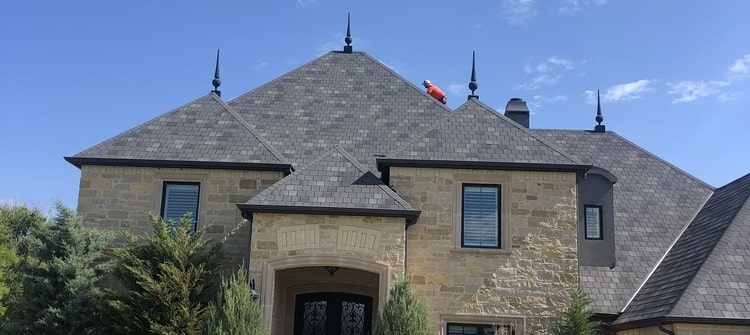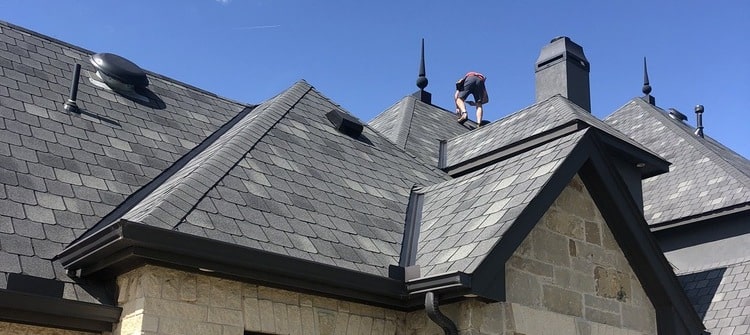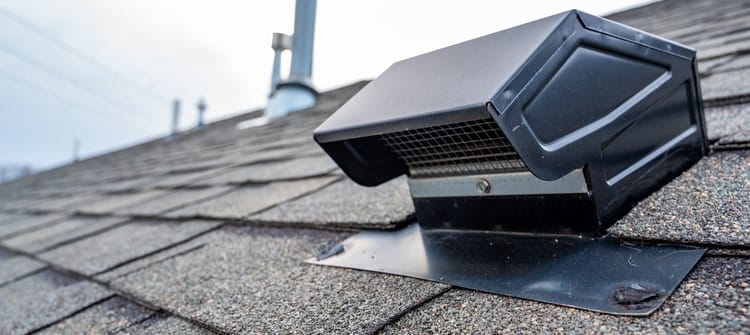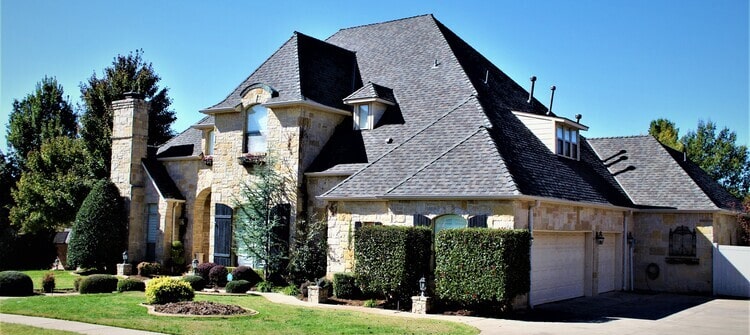The Role Heat Plays on an Oklahoma Roof
Your roof is the first line of defense against the elements, and extreme heat is one of the significant challenges it faces.
The relentless Oklahoma heat can cause various issues, including damage to roofing materials, increased energy consumption, and reduced lifespan of your roof.
As the owner of Belter Roofing and Construction, a roofing company in Oklahoma, I understand the importance of addressing the impact of Oklahoma heat on roofs.
The scorching summer temperatures in Oklahoma can harm the lifespan and performance of your roof, causing you to seek out a roof repair or total roof replacement.
Let’s explore how the intense heat in Oklahoma affects your roof and discuss practical strategies to mitigate these effects.
Understanding Oklahoma’s Climate
Oklahoma experiences a continental climate with hot summers and cold winters.
During the summer months, temperatures often soar above 90 degrees Fahrenheit (32 degrees Celsius).
The combination of high temperatures and intense sunlight can adversely affect your roof.
Expansion and Contraction: The Effects of Heat on Roofing Materials
Roofing materials, such as asphalt shingles, metal, and tiles, are susceptible to expansion and contraction due to temperature fluctuations.
As the sun beats down on your roof, the materials expand, and when the temperature cools down, they contract.
This continuous cycle of expansion and contraction can lead to cracks, warping, and overall roof deterioration.

Shingle Damage and Deterioration
Asphalt shingles are commonly used in Oklahoma roofs, and they are particularly vulnerable to heat damage.
Prolonged exposure to high temperatures can cause the shingles to become brittle, crack, and lose their protective granules.
This deterioration compromises their ability to shield your home from water infiltration and other elements.
Increased Energy Consumption
Oklahoma’s scorching heat can also significantly impact your energy bills.
When your roof is not adequately insulated or ventilated, the hot air accumulates in the attic, making your cooling system work harder to maintain a comfortable temperature inside.
This increased energy consumption adds to your expenses and strains the environment.
Proper Roof Ventilation: An Effective Solution
One of the critical strategies to combat the adverse effects of Oklahoma heat on your roof is to ensure proper roof ventilation.
Adequate ventilation allows the hot air trapped in the attic to escape, reducing the strain on your cooling system and preventing the excessive heat buildup that can damage your roof.
Installing ridge vents, soffit vents, or attic fans can improve airflow and promote a healthier roofing system.
Importance of Roof Insulation
In addition to ventilation, proper insulation is crucial for protecting your roof from Oklahoma heat.
Insulation acts as a barrier, preventing heat transfer from the roof to the interior of your home.
By keeping the heat out, insulation helps maintain a comfortable indoor temperature and reduces the workload on your cooling system.

Regular Roof Inspections and Maintenance
Regular inspections and maintenance ensure your roof remains resilient despite Oklahoma’s heat.
Hiring a professional roofing contractor to inspect your roof at least once a year can help identify any issues early on.
They will check for signs of roof damage, such as cracked shingles, blistering, or discoloration, and recommend appropriate repairs or replacements.
Protecting Your Roof from the Heat: Tips and Best Practices
Here are some additional tips and best practices to protect your roof from the harsh Oklahoma heat:
Apply a reflective coating: Consider applying a reflective layer to your roof. These coatings are designed to reflect sunlight, reducing heat absorption and lowering the temperature of your roof.
Provide shade: Planting trees or installing shade structures near your home can help shade your roof, reducing direct exposure to the sun’s rays.
Clean your gutters: Clogged gutters can hinder proper drainage, leading to water pooling on your roof. This standing water can contribute to heat-related damage. Regularly clean your gutters to ensure adequate water flow.
Avoid walking on the roof during hot days: Walking on a hot roof can cause additional stress to the roofing materials, potentially leading to damage. If inspections or repairs are needed, schedule them during cooler times.
Seek professional advice: Consult with a reputable roofing professional who understands the challenges of Oklahoma’s climate. They can provide tailored recommendations based on your specific roofing needs.

Frequently Asked Questions
Here are a few common roofing questions referring to the effect of Oklahoma heat on a roof:
Q1: How often should I have my roof inspected in Oklahoma?
It is recommended that your roof be inspected at least once a year, preferably before the summer season, when temperatures soar. Regular inspections help identify any issues early on and prevent further damage.
Q2: Can I install a new roof in Oklahoma during the summer?
While it is possible to install a new roof during the summer, extreme heat and its effects on roofing materials should be considered. Consult a professional roofer to determine the best time for your roofing project.
Q3: Are metal roofs more resistant to heat damage in Oklahoma?
Metal roofs tend to be more heat resistant than traditional asphalt shingles. They reflect more sunlight and dissipate heat more efficiently. However, proper insulation and ventilation are crucial for maintaining a comfortable indoor temperature.
Q4: How can I tell if my roof has heat-related damage?
Look for signs such as cracked or curled shingles, granule loss, discoloration, or sagging areas on your roof. If you notice any of these signs, a professional should inspect your roof to assess the extent of the damage.
Q5: Can roof coatings help reduce heat absorption?
Applying reflective roof coatings can help reduce heat absorption by reflecting sunlight. These coatings are designed to improve energy efficiency and protect your roof from heat-related damage.
Final Thoughts
In conclusion, the intense heat in Oklahoma can significantly impact your roof.
From the expansion and contraction of materials to shingle damage, increased energy consumption, and reduced lifespan, the effects of heat should not be underestimated.
However, by implementing proper roof ventilation, insulation, and regular maintenance, you can mitigate these effects and ensure your roof remains in optimal condition for years.

Consider Belter Roofing for Your Roofing Needs
Protecting your roof from Oklahoma’s heat requires proactive measures and regular maintenance.
By implementing the strategies discussed in this article, you can ensure your roof withstands the challenges of the climate and provides lasting protection for your home.
Contact Belter Roofing to identify signs of Oklahoma roof damage and receive personalized solutions from our skilled professionals.
Trust our experience for a durable and dependable roofing system; we provide several Oklahoma roofing services.
Reach out to Belter Roofing and Construction today!
Let's Have a Conversation
Table of Contents
- The role Oklahoma heat plays
- Understanding Oklahoma heat
- Expansion and contraction
- Shingle damage and deterioration
- Increased energy consumption
- Proper roof ventilation
- Importance of roof insulation
- Regular roof inspections
- Best practices
- Frequently asked questions
- Final thoughts
- Get expert assistance
Share this Article


